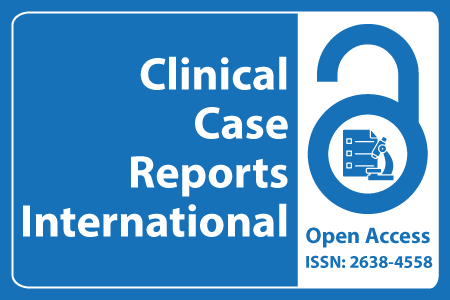
Journal Basic Info
- Impact Factor: 0.285**
- H-Index: 6
- ISSN: 2638-4558
- DOI: 10.25107/2638-4558
Major Scope
- Pulmonary Disease
- Physical Medicine & Rehabilitation
- Autism
- Anesthesiology and Pain Medicine
- Lung Cancer
- Pathology
- Cardio-Thoracic Surgery
- Radiology Cases
Abstract
Citation: Clin Case Rep Int. 2020;4(1):1190.DOI: 10.25107/2638-4558.1190
Observation of the Glycemic Behavior of a Type 1 Diabetic during Strength Training in Different Intensities: A Case Study
Ricardo Hosanã Dias da Silva, Jonathan Nícolas dos Santos Ribeiro, Elizabelle Pereira Costa, Stefhany Rodrigues da Silva, Arielle Alexandre Martins, Tatiana Acioli Lins1 and Denise Maria Martins Vancea
Research Group Physical Exercise and Chronic Non-Communicable Diseases, Brazil Federal University of Pernambuco, Brazil
*Correspondance to: Ricardo Hosanã Dias da Silva
PDF Full Text Mini Review | Open Access
Abstract:
Introduction: Type 1 Diabetes therapy has historically followed the insulin/food/physical exercise triad. Today it is known that strength training (TF) has benefits such as decreased fasting glycemia, glycated hemoglobin, stimulates translocation of GLUT4 in skeletal muscle, increases insulin sensitivity, restoring metabolic control. The objective of this research was to observe the glycemic responses of a type 1 diabetic who underwent strength training at different intensities. Methods: A 26-year-old woman with type 1 Diabetes Mellitus participated in this research, with a trained diagnosis time of 22 (twenty-two) years. The volunteer participated in three non-consecutive days of intervention at the first visit. The evaluation was performed with a test of Maximum Repetition (1RM) in the following exercises: Bench press; Knee extension on the device; Peck Deck; Front high pulley with cable; Leg 45°; Low row with triangle. On the second visit to the laboratory, the TF session was performed at 40% of 1RM. On the third visit, the session was performed at 80% of 1RM, capillary blood glucose was collected before, during and immediately after each strength training session. Results: The results observed showed that the exercise of less intensity, at 40% of 1 RM, showed a greater drop in capillary glycemia during and immediately after the TF session. Conclusion: Different intensities will result in different physiological responses. It is important to highlight the need for blood glucose monitoring before, during and after training.
Keywords:
Type 1 Diabetes; Blood Glucose; Strength Training
Cite the Article:
Dias da Silva RH, dos Santos Ribeiro JN, Costa EP, da Silva SR, Martins AA, Lins TA, et al. Observation of the Glycemic Behavior of a Type 1 Diabetic during Strength Training in Different Intensities: A Case Study. Clin Case Rep Int. 2020; 4: 1190.













